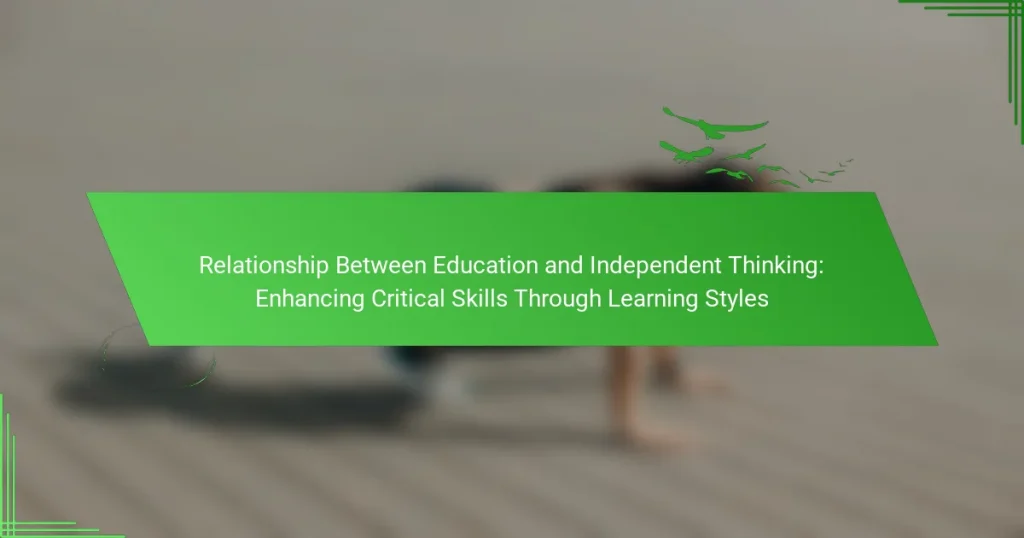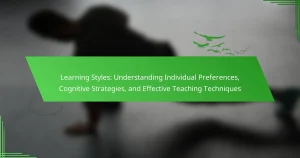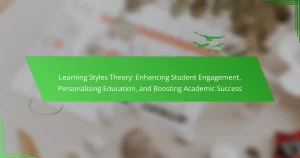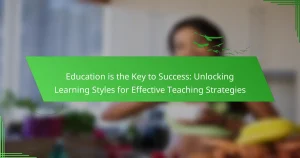Independent thinking is crucial for effective problem-solving and creativity in today’s complex world. Education plays a vital role in fostering these skills through diverse learning styles and active engagement. This article explores how personalized, inquiry-based, and collaborative learning strategies enhance critical thinking. It also examines the importance of flexibility and emotional support in creating effective learning environments.
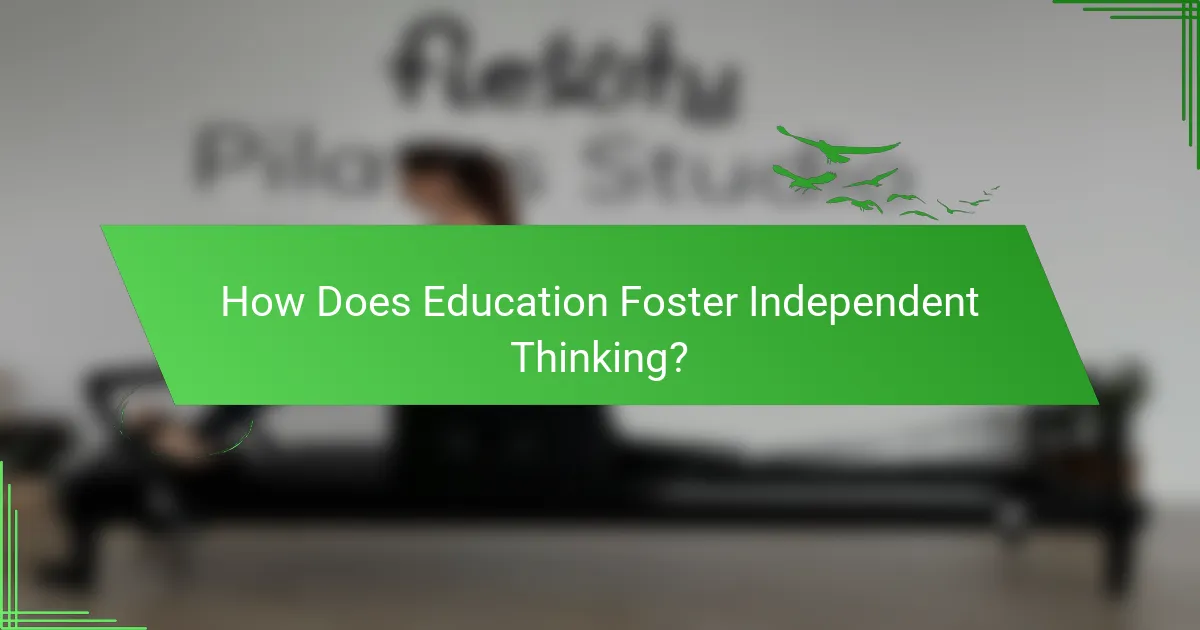
How Does Education Foster Independent Thinking?
Education fosters independent thinking by encouraging critical analysis and diverse learning styles. It promotes skills such as problem-solving and creativity. Active learning methods, like discussions and projects, enhance engagement and deepen understanding. Research indicates that students exposed to varied teaching approaches develop better critical thinking abilities. Independent thinking is further nurtured through collaborative activities that challenge assumptions and foster innovation.
What Are the Key Components of Independent Thinking?
Independent thinking involves critical skills enhanced by education through various learning styles. Key components include analytical reasoning, problem-solving, creativity, and self-reflection. These attributes foster a deeper understanding and application of knowledge, leading to informed decision-making. Furthermore, diverse learning styles, such as visual, auditory, and kinesthetic, cater to individual preferences, promoting engagement and retention. This tailored approach cultivates a unique attribute of independent thinking: adaptability in thought processes, essential for navigating complex challenges.
How Do Learning Styles Influence Critical Skills?
Learning styles significantly influence critical skills by shaping how individuals process information and engage in independent thinking. Different styles, such as visual, auditory, and kinesthetic, cater to diverse cognitive preferences, enhancing comprehension and retention. For instance, visual learners may excel in problem-solving through diagrams, while auditory learners benefit from discussions that stimulate critical analysis. Tailoring educational approaches to these styles fosters an environment that encourages independent thought, allowing learners to develop essential critical skills more effectively. Studies suggest that personalized learning experiences lead to improved outcomes in critical thinking and decision-making abilities.
What Are the Different Learning Styles?
Different learning styles significantly impact education and independent thinking. Visual, auditory, and kinesthetic styles cater to diverse preferences, enhancing critical skills. Visual learners benefit from diagrams and charts, auditory learners thrive with discussions, and kinesthetic learners excel through hands-on activities. Understanding these styles fosters personalized learning experiences, promoting independent thinking and deeper engagement in education.
How Do Learning Styles Impact Student Engagement?
Learning styles significantly enhance student engagement by catering to individual preferences. Students are more likely to participate actively when teaching methods align with their learning styles. For instance, visual learners benefit from diagrams, while auditory learners thrive in discussions. Research indicates that personalized learning approaches can improve retention rates by up to 30%. Adapting educational strategies to various learning styles fosters critical thinking skills, encouraging independent thought. This alignment not only boosts engagement but also cultivates a deeper understanding of the material.

What Universal Benefits Are Associated with Enhanced Critical Skills?
Enhanced critical skills foster independent thinking, leading to universal benefits such as improved problem-solving, better decision-making, and increased creativity. These skills enable individuals to analyze information effectively, question assumptions, and develop innovative solutions. Moreover, they contribute to academic success and lifelong learning, enhancing adaptability in various life situations. By cultivating critical thinking through diverse learning styles, individuals gain tools to navigate complex challenges and engage thoughtfully with the world around them.
How Does Critical Skills Development Affect Academic Performance?
Critical skills development significantly enhances academic performance by fostering independent thinking. Students who engage in critical skills training exhibit improved problem-solving abilities and creativity. This approach encourages deeper understanding and retention of knowledge. Research indicates that diverse learning styles contribute to the effectiveness of critical skills development, tailoring education to individual needs. As a result, students become more adaptable and proficient learners, leading to better academic outcomes.
What Role Does Emotional Intelligence Play in Independent Thinking?
Emotional intelligence enhances independent thinking by fostering self-awareness and empathy. Individuals with high emotional intelligence can evaluate their emotions and those of others, leading to better decision-making. This skill encourages critical thinking, as it allows for diverse perspectives and thoughtful analysis of situations. Research indicates that emotional intelligence contributes to improved problem-solving abilities and creativity, which are essential for independent thought. By integrating emotional intelligence into educational frameworks, learners can develop critical skills that promote independent thinking.
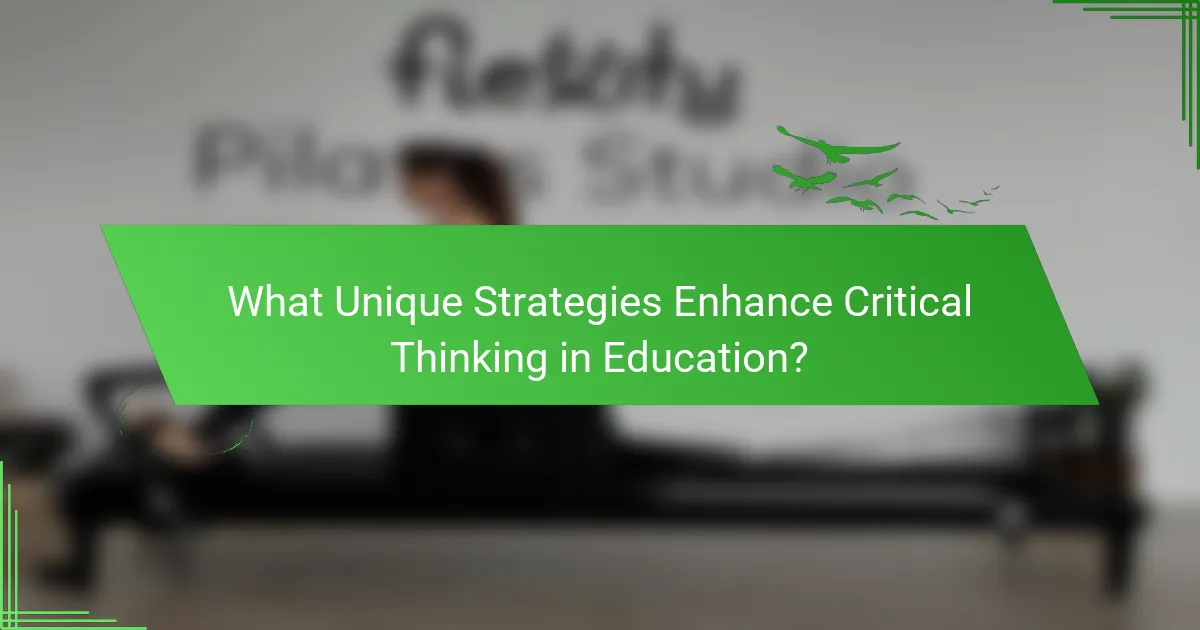
What Unique Strategies Enhance Critical Thinking in Education?
Unique strategies that enhance critical thinking in education include personalized learning, inquiry-based learning, and collaborative problem-solving. These approaches foster independent thinking by engaging students in active learning environments.
Personalized learning tailors educational experiences to individual student needs, allowing for deeper understanding. Inquiry-based learning encourages students to ask questions and explore topics, promoting curiosity and analytical skills. Collaborative problem-solving involves teamwork to tackle complex problems, enhancing communication and critical analysis.
Implementing these strategies can significantly improve students’ critical thinking abilities, preparing them for real-world challenges.
How Can Educators Tailor Approaches to Individual Learning Styles?
Educators can tailor approaches to individual learning styles by assessing students’ unique preferences and adapting instructional methods accordingly. This personalization enhances critical thinking skills and fosters independent learning. Techniques include differentiated instruction, incorporating various teaching modalities, and providing choices in assignments. For example, visual learners benefit from diagrams, while auditory learners engage more with discussions. By aligning teaching strategies with learning styles, educators create a more effective learning environment that promotes self-directed thinking and deeper understanding.
What Innovative Teaching Methods Promote Independent Thought?
Innovative teaching methods that promote independent thought include project-based learning, Socratic questioning, and flipped classrooms. These approaches encourage students to engage critically with material and develop problem-solving skills.
Project-based learning allows learners to explore real-world challenges, enhancing their analytical skills. Socratic questioning fosters deep discussions, prompting students to think critically and articulate their reasoning. Flipped classrooms shift traditional learning, enabling students to learn at their own pace and apply knowledge in collaborative settings.
These methods not only enhance critical thinking but also cultivate a sense of ownership in the learning process, essential for independent thought.

What Rare Attributes Contribute to Effective Learning Environments?
Rare attributes that contribute to effective learning environments include flexibility, emotional support, and collaborative opportunities. Flexibility allows for personalized learning paths, accommodating diverse learning styles. Emotional support fosters a safe atmosphere, encouraging risk-taking and open communication. Collaborative opportunities enhance critical thinking by engaging students in discussions, promoting independent thought and problem-solving skills. These attributes collectively create a dynamic educational landscape that nurtures independent thinking and enhances critical skills.
How Do Cultural Contexts Shape Learning Styles?
Cultural contexts significantly influence learning styles by shaping how individuals process information and engage with educational content. Different cultures prioritize various ways of thinking, which can enhance critical skills in unique ways.
For instance, collectivist cultures often emphasize group learning, fostering collaboration and shared problem-solving. This contrasts with individualistic cultures that may promote independent thinking and self-directed learning.
Research indicates that students from diverse cultural backgrounds may benefit from tailored educational approaches that align with their cultural values. Such adaptations can lead to improved critical thinking skills and more effective learning experiences.
Ultimately, understanding these cultural influences allows educators to create more inclusive and effective learning environments that cater to varied learning preferences.
What Are the Long-term Impacts of Independent Thinking on Career Success?
Independent thinking significantly enhances career success by fostering creativity and problem-solving skills. Individuals who engage in independent thinking develop a unique approach to challenges, leading to innovative solutions. This skill is particularly valuable in dynamic work environments where adaptability is crucial. Research indicates that professionals who prioritize independent thought are more likely to achieve leadership roles and advance their careers. Moreover, independent thinkers often exhibit higher job satisfaction and engagement, contributing to overall organizational success.

What Best Practices Can Educators Implement for Skill Enhancement?
Educators can enhance critical skills by fostering independent thinking through diverse learning styles. Implementing active learning strategies, promoting collaborative projects, and integrating real-world problem-solving can significantly improve student engagement and skill development.
Active learning encourages students to participate in their education, enhancing retention and understanding. Collaborative projects build teamwork and communication skills, essential for independent thinking. Real-world problem-solving connects theory to practice, making learning relevant and impactful.
By tailoring instructional methods to various learning styles, educators can address individual needs, fostering a more inclusive environment. This approach not only enhances critical skills but also empowers students to think independently and creatively.
How Can Educators Create a Supportive Learning Atmosphere?
Educators can create a supportive learning atmosphere by fostering open communication and encouraging independent thinking. Building strong relationships with students enhances critical skills and accommodates diverse learning styles.
Incorporating collaborative activities promotes engagement and allows students to express their thoughts freely. For example, group discussions and peer feedback sessions can deepen understanding and develop critical thinking.
Establishing clear expectations and providing constructive feedback helps students feel valued and supported. This approach cultivates a safe environment where students are more willing to take intellectual risks.
Lastly, recognizing individual learning preferences enables educators to tailor their teaching methods, enhancing overall effectiveness. Personalizing education boosts confidence and encourages independent thought.
What Common Mistakes Should Be Avoided in Teaching Critical Skills?
To enhance critical skills, avoid common mistakes such as neglecting diverse learning styles, focusing solely on rote memorization, and ignoring real-world applications. Incorporating varied instructional methods fosters independent thinking. Additionally, failing to provide constructive feedback can hinder skill development. Emphasizing collaboration and open dialogue encourages critical analysis and deeper understanding.
What Expert Insights Can Guide Effective Learning Strategies?
Effective learning strategies enhance independent thinking by fostering critical skills. Expert insights emphasize personalized learning styles that cater to individual cognitive preferences. Research indicates that students who engage with material in varied ways, such as visual or kinesthetic methods, develop deeper understanding and retention. Furthermore, integrating collaborative learning experiences promotes critical thinking by encouraging diverse perspectives. Adapting teaching methods to include these elements can significantly improve educational outcomes and empower learners to think independently.
